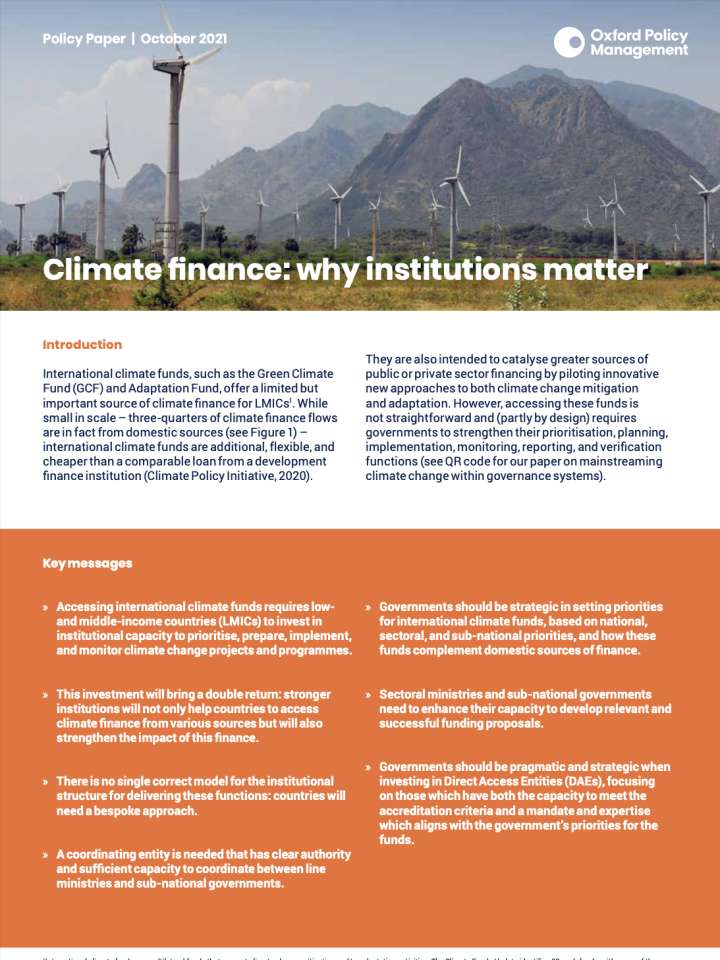Climate finance: Why institutions matter
This paper evaluates why institutions matter in climate finance. International climate funds, such as the Green Climate Fund (GCF) and Adaptation Fund, offer a limited but important source of climate finance for LMICs1. While small in scale – three-quarters of climate finance flows are in fact from domestic sources – international climate funds are additional, flexible, and cheaper than a comparable loan from a development finance institution (Climate Policy Initiative, 2020). They are also intended to catalyse greater sources of public or private sector financing by piloting innovative new approaches to both climate change mitigation and adaptation. However, accessing these funds is not straightforward and (partly by design) requires governments to strengthen their prioritisation, planning, implementation, monitoring, reporting, and verification functions (see QR code for our paper on mainstreaming climate change within governance systems).
Some of the key messages include:
- Accessing international climate funds requires low and middle-income countries (LMICs) to invest in institutional capacity to prioritise, prepare, implement, and monitor climate change projects and programmes.
- This investment will bring a double return: stronger institutions will not only help countries to access climate finance from various sources but will also strengthen the impact of this finance.
- There is no single correct model for the institutional structure for delivering these functions: countries will need a bespoke approach.
Explore further
